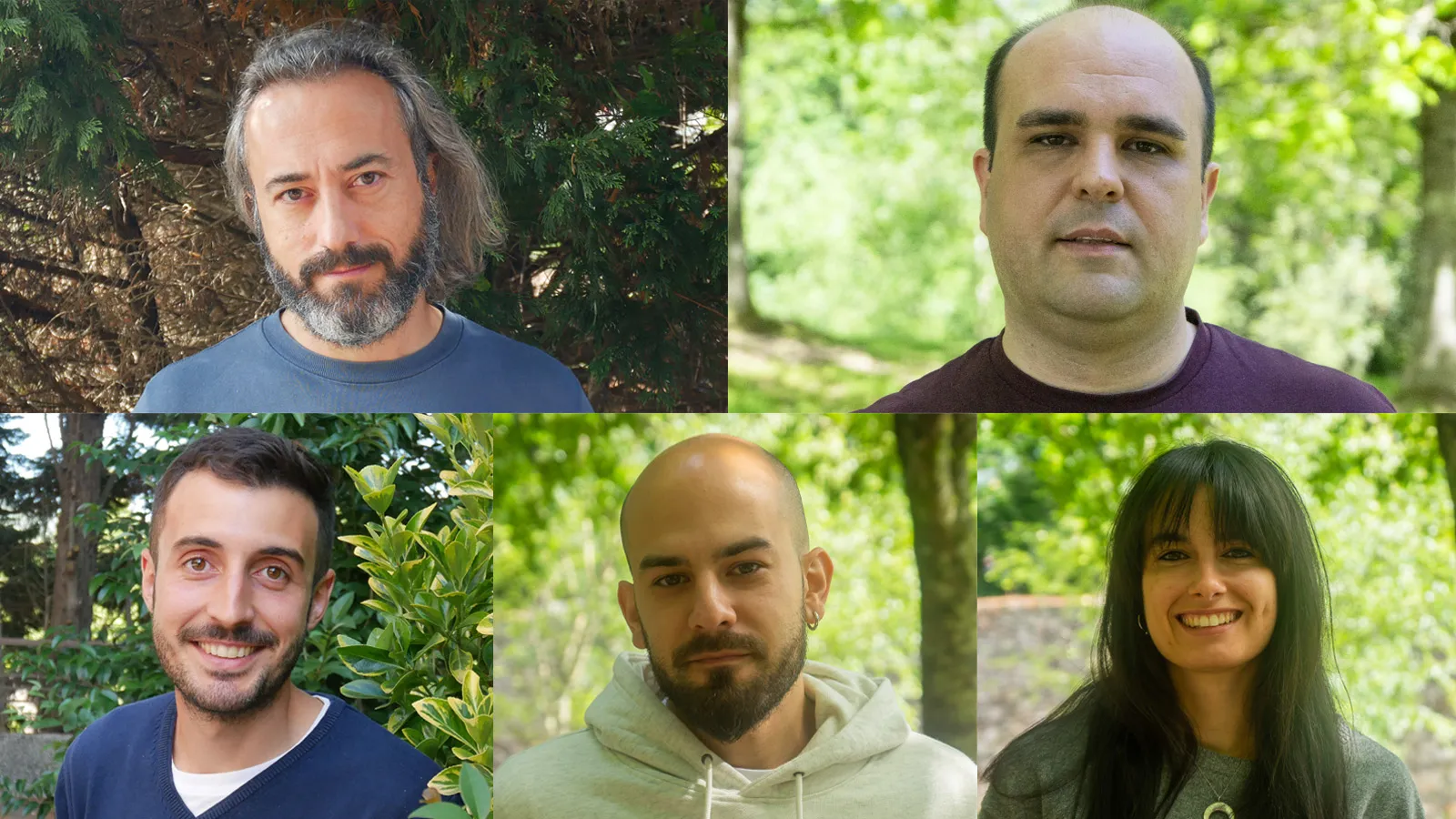‘Nature’ publica un traballo pioneiro sobre fisión nuclear no que participa o IGFAE



06.05.2019

O observatorio LIGO, no que colabora o Instituto Galego de Física de Altas Enerxías (IGFAE), e o detector de ondas gravitacionais Virgo descubriron o pasado 25 de abril novas perturbacións do espazo-tempo producidas polo posible choque de dúas estrelas de neutróns. Un día despois, a rede detectou un evento nunca antes observado: a posible colisión entre unha estrela de neutróns e un burato negro.
O Observatorio de Ondas Gravitacionais por Interferometría Láser (LIGO), no que colabora o Instituto Galego de Física de Altas Enerxías (IGFAE), instituto mixto da Universidade de Santiago de Compostela (USC) e a Xunta de Galicia, xunto co detector Virgo, rexistrou o 25 de abril ondas gravitacionais dun posible choque entre dúas estrelas de neutróns. Un día despois, o 26 de abril, a rede LIGO-Virgo descubriu outra fonte candidata que pode resultar da colisión dunha estrela de neutróns e un burato negro, un evento nunca antes observado.
Os descubrimentos prodúcense poucas semanas despois de que LIGO e Virgo volvéronse a po-ñer en funcionamento. Os detectores xemelgos de LIGO, un en Washington e outro en Louisia-na en Estados Unidos, xunto con Virgo, situados no Observatorio Gravitacional Europeo (EGO) en Italia, renovaron as súas operacións o 1 de abril tras unha serie de melloras para aumentar a súa sensibilidade ás ondas gravitacionais. Agora cada detector estuda volumes máis grandes do Universo —distancias máis afastadas- en busca de eventos extremos como colisións entre buratos negros e estrelas de neutróns.
Ademais dos dous novos candidatos que involucran ás estrelas de neutróns, a rede LIGO-Virgo descubriu nesta última observación tres posibles fusións de buratos negros. En total, desde que se fixo a primeira detección directa de ondas gravitacionais en 2015, a rede atopou evidencia de dúas fusións de estrelas de neutróns, 13 fusións de buratos negros, e unha posible fusión entre unha estrela de neutróns e un burato negro.
Cando dous buratos negros chocan, deforman o tecido espazo-temporal, producindo ondas gravitacionais. Non obstante, cando dúas estrelas de neutróns chocan, non só envían ondas gravitacionais, senón tamén luz que pode ser observada por telescopios terrestres e espaciais. Un destes eventos ocorreu en agosto de 2017: LIGO e Virgo detectaron unha fusión de estrelas de neutróns en ondas gravitacionais e nos días e meses seguintes, preto de 70 telescopios observaron este evento en todo o espectro elctromagnético, desde os raios gamma ata as ondas de radio. No caso do choque entre as dúas estrelas de neutróns, telescopios de todo o mundo apresuráronse a rastrexar as fontes e captar luz —a contrapartida óptica- e outras radiacións que se esperaban deste tipo de fusións, pero ata este momento ningunha das fontes foi identificada.
Posible colisión entre unha estrela de neutróns e un burato negro
A colisión da estrelas de neutróns do 25 de abril, denominada S190425z, produciuse a uns 500 millóns de anos luz da Terra. Só unha das instalacións xemelgas de LIGO captou o seu sinal xunto con Virgo (LIGO Livingston foi testemuña do evento, pero LIGO Hanford estaba desconectado). Debido a que só dous dos tres detectores rexistraron o sinal, non se puido situar con precisión a súa localización e a procura debe realizarse nunha rexión moi grande correspondente a case a cuarta parte do ceo.
A posible colisión do burato negro e a estrela de neutróns do 26 de abril, denominado S190426 c, tivo lugar a aproximadamente 1,2 mil millóns de anos luz de distancia. Foi observado polas tres instalacións de LIGO-Virgo, o que axudou a restrinxir a súa localización nunha área que cobre o 3% do ceo.
Ondas gravitacionais desde Galicia
O Grupo de Ondas Gravitacionais do IGFAE é o máis recente dos cinco grupos españois que estudan o Universo nesta nova xanela da Astronomía, sumándose en outubro de 2018 á Cola-boración Científica de LIGO na que tamén participa a Universitat de lles Illes Balears (UIB). Os tres grupos restantes da Universitat de València (UV), o Institut de Ciènces del Cosmos da Uni-versitat de Barcelona (ICCUB) e o Institut de Física d’ Altes Energies (IFAE) son membros da Co-laboración Virgo.
Nota de prensa de LIGO: https://www.ligo.caltech.edu/news/ligo20190502
Imaxe: simulación dunha fusión de estrelas de neutróns. Arriba á esquerda, en sentido horario, as dúas estrelas de neutróns (coloreadas en branco) viran unha ao redor da outra en espiral ata que se contactan e fusiónanse nunha única estrela de neutróns masiva. Parte do material (coloreado segundo a súa densidade) contamina os arredores, formando un disco de acreción. Toda a secuencia dura 0,03 segundos. Na maioría dos casos, a estrela de neutróns masiva non pode soportar a súa propia gravidade por moito tempo e finalmente colapsa nun burato negro. Crédito: Ciolfi, Giacomazzo (Virgo Collaboration) & Kastaun (LIGO Scientific Collaboration).